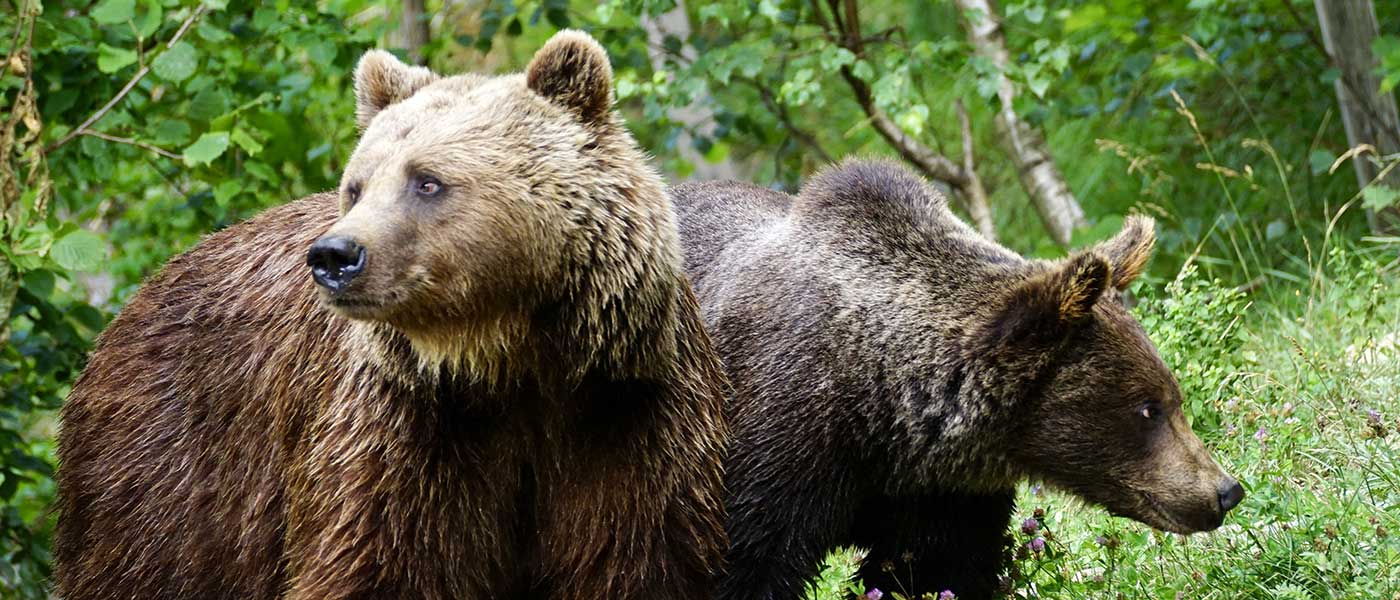PirosLIFE: towards the consolidation of the brown bear in the Pyrenees

The situation of the brown bear in the Pyrenees is not promising. For this reason, the Generalitat de Catalunya, together with the European Union, has undertaken measures such as the project PirosLIFE. It is an initiative whose purpose is the recovery of the Ursus arctos in the mountain pyrenean.
Do you want to know more about the circumstances surrounding this endangered species? Do you love biodiversity and would like to see a more abundant bear population? Although the news coming from the Pyrenees is not entirely positive, the commitment to the brown bear and to the enrichment of the native fauna reveals hope.
Previous steps of the PirosLIFE project
The brown bear disappeared from the central Pyrenean area in 1990. Six years later, an action to reinforce species from Slovenia, similar to those inhabiting the mountain range, began. This action was financed and promoted by France, Spain and the European Union within the LIFE programme.
Controversy began to rage. This action provoked conflict with the local population. In spite of this, the idea continues. It is outlined with the need to implement measures and actions that advocate the consolidation of the presence of the brown bear in the Pyrenees. In this sense, in a favourable environment and with the premise of spreading the species to other areas of the mountain range and Europe.
Cooperation and coexistence under the PirosLIFE umbrella
In addition to repopulating this species characteristic of the Pyrenees, various actions have been carried out under the PirosLIFE programme. In this case, to prevent attacks and help farmers and stockbreeders feel supported.
The coexistence of sectors is one of the pillars of the project. Thus, 40 % of its funds are earmarked for this function. The aim is to recover the brown bear as a means of diversifying the fauna and conserving it. A purpose linked to the cohabitation with the local people, providing them with support for a healthy coexistence with the plantigrade.
Thus, the activities typical of the area are maintained while the brown bear recovers its status as a species peculiar to the Pyrenean area. An animal of reference, a tourist attraction, which you will be able to see thanks to its repopulation and reproduction.
In fact, in 2016, 31 specimens were recorded, of which 10 were females with their corresponding cubs and 5 males. Subsequently, the population increased with the birth of 12 cubs, the highest number ever since the project for the recovery of this species began.
Wildlife will thus be able to coexist with agricultural, livestock and beekeeping operations in the high mountains. It is a question of enriching environmental assets without harming local work.
It has been demonstrated that the presence of the brown bear is compatible with the area's own activities, as is the case in other autonomous communities. There is also a clear concern for nature on the part of society, which has become involved in ecotourism.
The Goiat bear arrives in the Catalan and French mountain ranges
A new bear of Slovenian origin has increased the bear population. It has done so since last June when it was released to expand the Pyros lineage. This male is the one that has practically headed the procreation in the central area of the Pyrenees.
The aim? To vary the genetic lineage of the current brown bear, since practically all the existing plantigrades are the offspring or grandchildren of Pyros.
In short, the PirosLIFE plan has succeeded in giving value to the brown bear population, although there is still a long way to go for Pyros, Goiat and all their lineage to increase. Do you dare to visit them?
Don't miss any adventure in the Pyrenees!
